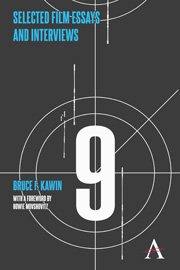Book contents
5 - The Mummy's Pool
from PART II - HORROR AND SCIENCE FICTION
Published online by Cambridge University Press: 05 May 2013
Summary
This article appeared in the experimental journal Dreamworks in 1981, has been reprinted in several anthologies, and was slightly revised in 1984. (This is the revised version.) Many years later, it led to my book Horror and the Horror Film. From this distance, I think it contains too many Freudian readings. I also have a few corrections:
The reference to “the color section of The Wizard of Oz” should say that it is part of Dorothy's mindscreen, which also includes some sepia shots (see “Dorothy's Dream, ” later in this volume). The discussion of The last Wave is based on the U.S. release print; the director's cut, which I saw much later, implies that at the end the lawyer, rather than becoming the first victim, is having a vision. And in the discussion of The Day the Earth Stood Still and The Thing From Another World, “the military” should be substituted for “the army.”
Most horror movies made since this was written have refused to wrap things up neatly and reclose the system at their conclusions. Instead they have had open endings in which the horror is reasserted. Before that happens, however, a climax usually leads, even if briefly, to some kind of resolution. These open endings may be more radical than conservative, unless their message is to close down immediately, to try to be safe. Either way, they remain quite different from the more positive open endings so often found in science fiction.
- Type
- Chapter
- Information
- Selected Film Essays and Interviews , pp. 35 - 49Publisher: Anthem PressPrint publication year: 2013
- 1
- Cited by



